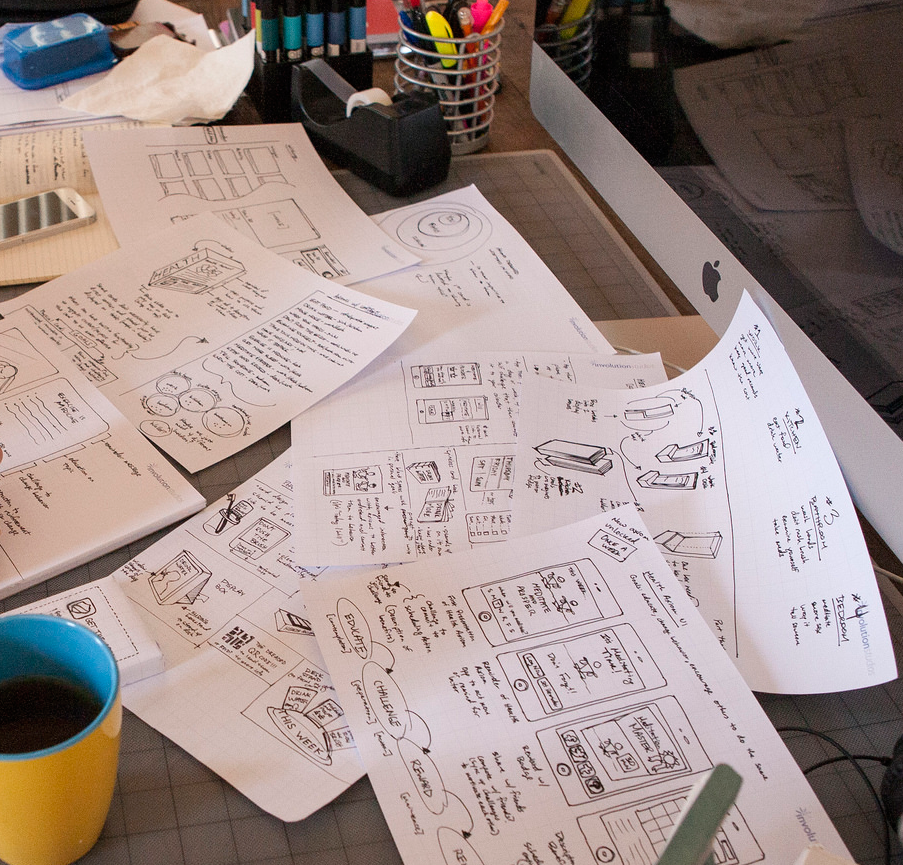Just Google “messy desk.”
Forbes, Business Insider, The New York Times, and any number of blogs will assure you that out of desktop chaos can come the very best of innovation. University studies have even been devoted to the topic of the cluttered workspace and its benefits to creative thought.
I generally have a messy desk both at work and at home. I don’t like clutter, but since I’m a working parent I claim higher priorities than tidiness. Recently I looked more closely at the “empty desk, empty mind” topic and was struck by these comments from designer Eric Karjaluoto of smashLAB:
A number of myths around creativity are simply hardwired into our culture. In no particular order: The belief that designers are sensitive prima donnas whose needs must be catered to; The idea that “eureka” moments come only after great toil; The belief that you need to create a mess in order to pull out a gem; The perception that ideas occur as a result of random, chaotic action, and are only impeded by rational, clear-headed examination and planning.
The problem with all of this is that a great deal of it isn’t accurate—particularly when it comes to design. Most designers I know are normal, sensible folks who like to solve problems. I think a lot of us start to find that our insights don’t come from within, but rather are the result of truly understanding a problem. Many appear to gravitate towards increasingly methodical ways of working, and documenting, their processes. And, with time, even their experiments become less random.
GoInvo designers, like most, approach this question in a variety of ways.
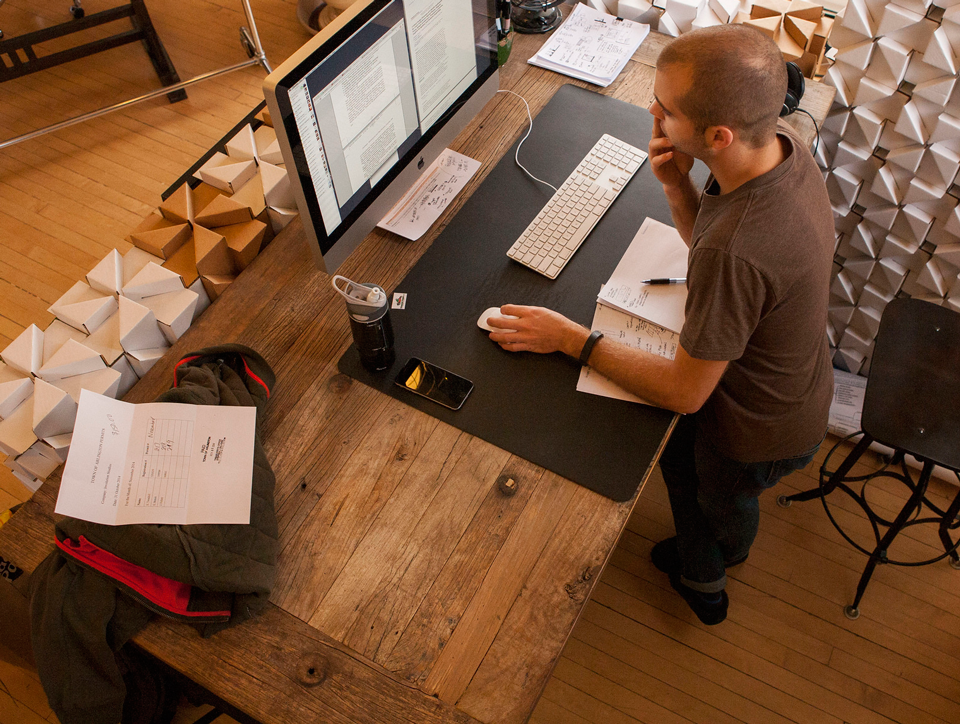
Clutter is a distraction for me so I keep my desk pretty sparse. Only the bare essentials are within arms reach. It helps me focus. And any mess I do make is usually a series of sketches attempting to untangle some complex system I’m thinking about. — Eric Benoit
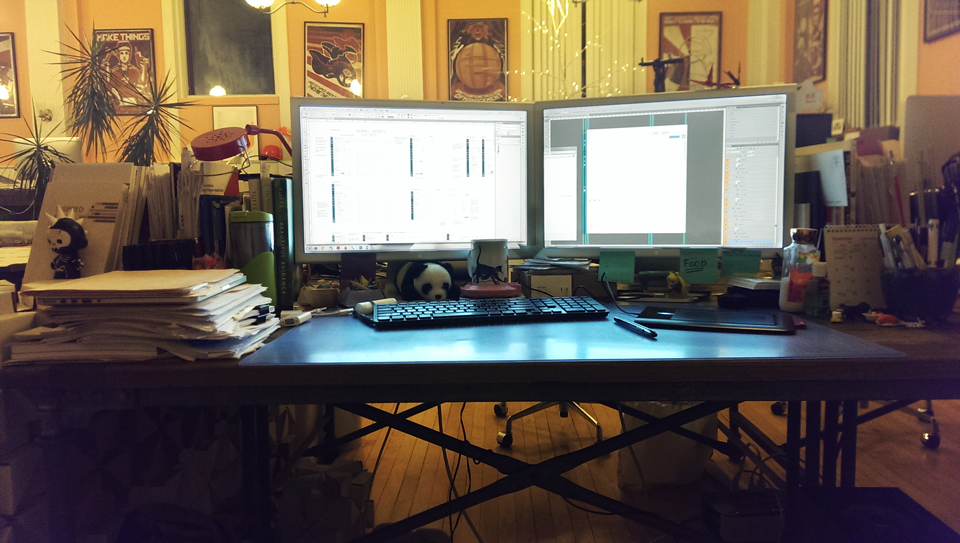
I like to think that a cluttered desk isn't necessarily a bad thing, but I don't believe that it's a requirement for creativity. Design is messy but it's drawn out of order just as much as out of mess and clutter, and in either case vision often needs to be tamed by order and practicality for successful design. Not just designers, but anyone will naturally organize their workspace to match their process and way of thinking. I really resent the idea that designers are sensitive and delicate creatures. Designers are made of harder stuff and can and need to take criticism, especially since critique is such a big part of the design process. We can be wrong. A lot of the time. Design takes research and experimentation and finding all the wrong answers before we arrive at the right answer. — Jen Patel
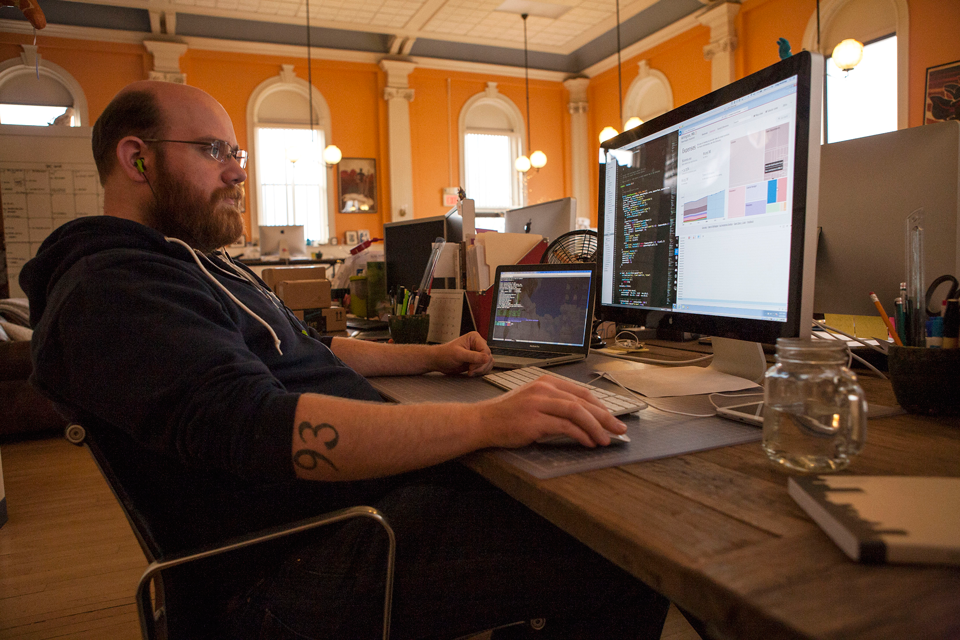
I have been writing my own music since I was eleven. I have found that there is no exact formula for me. Most musicians I've worked with are disheveled and messy, but that doesn’t necessarily make them a great song writer. On the other hand, you sometimes hear of amazingly talented artists are are neat freaks, perfectionists, and so on. Many great minds/artists have had routines—I believe I remember reading that Beethoven dumped a pot of water over himself every morning. I think it honestly just depends on the person. Music comes to me when I am absent minded or doing mundane tasks. A theme will be running in my head, sometimes for quite some time before I even realize it. This also happens when I am falling asleep. I also hear music in my dreams, and sometimes I will be able to remember it when I wake up and record the idea. The music comes when my brain is not actively seeking it, but instead when it is relaxed or on "auto-pilot" (which could be argued is a form of meditation). Even after writing music for 15 years, I cannot pick when I will write something good, or something I like. It happens when it happens, according to my emotions, my surroundings, and so on. I might argue that toiling away at something hour after hour, creating a “mess,” only produces a “gem” because your brain becomes so fatigued that the subconscious is allowed entry, to guide your pen or fingers. — Craig McGinley
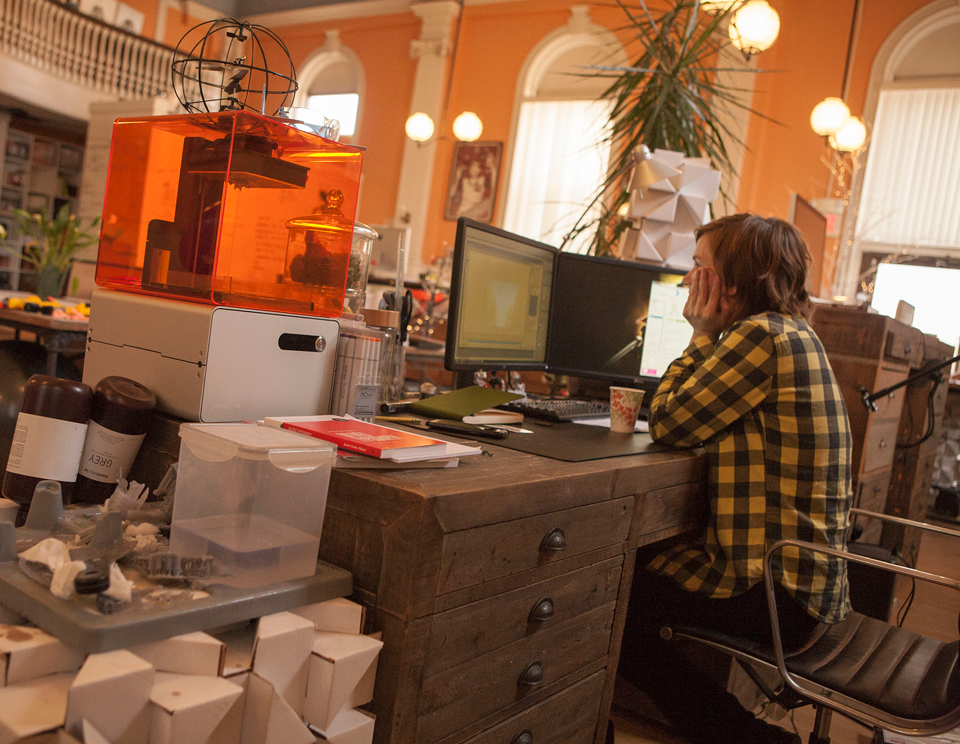
Note the sketchbook, Copic markers, drawing space, and resin at the ready. Always. — Sarah Kaiser
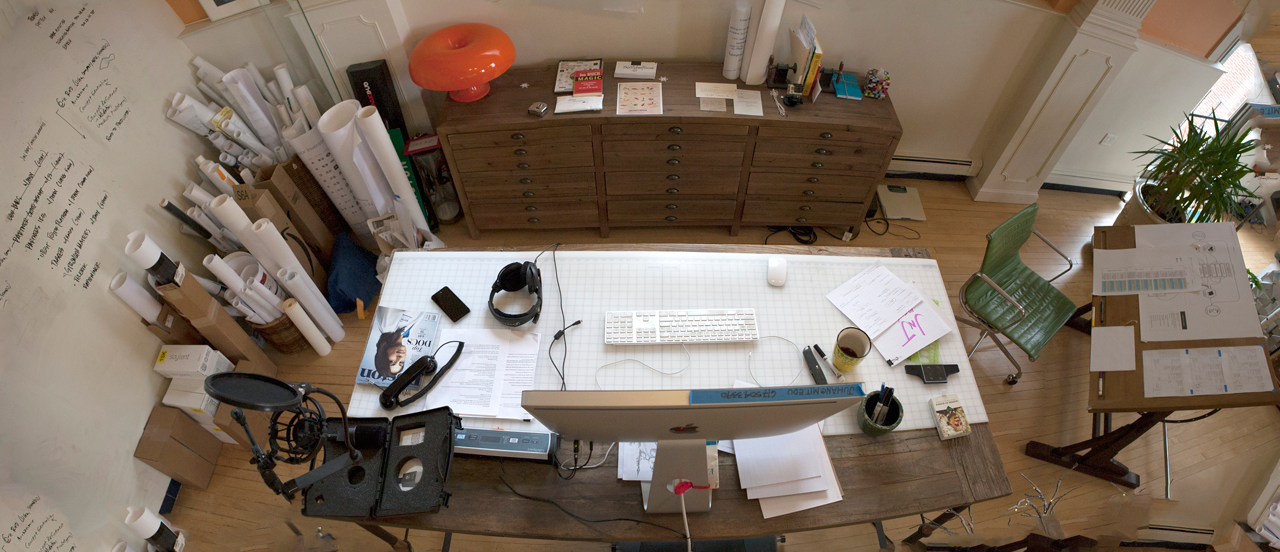
Note the lack of a chair. There’s a treadmill, instead. Clear desk, tools at hand, surrounding prints in disarry, and movement. — Juhan Sonin
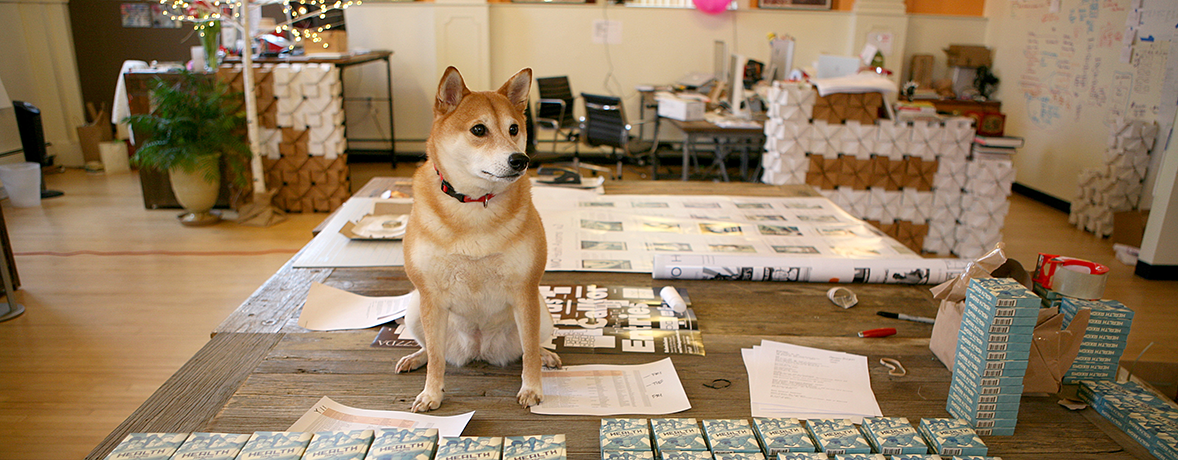
Koko seems to have a number of well-organized design projects ongoing. Good dog, Koko. — Koko Sleeper
